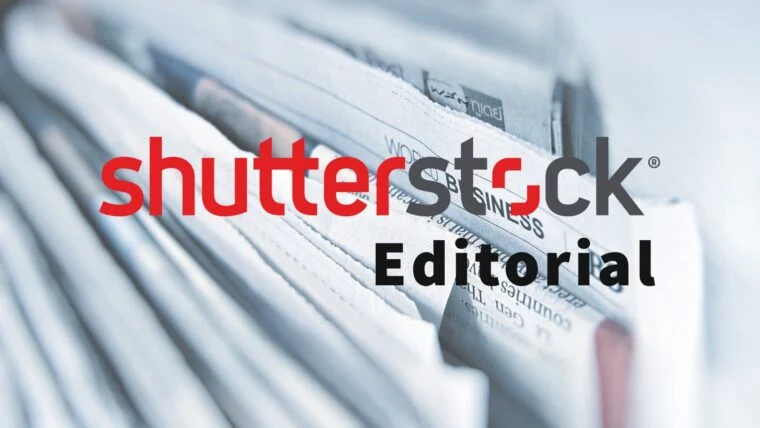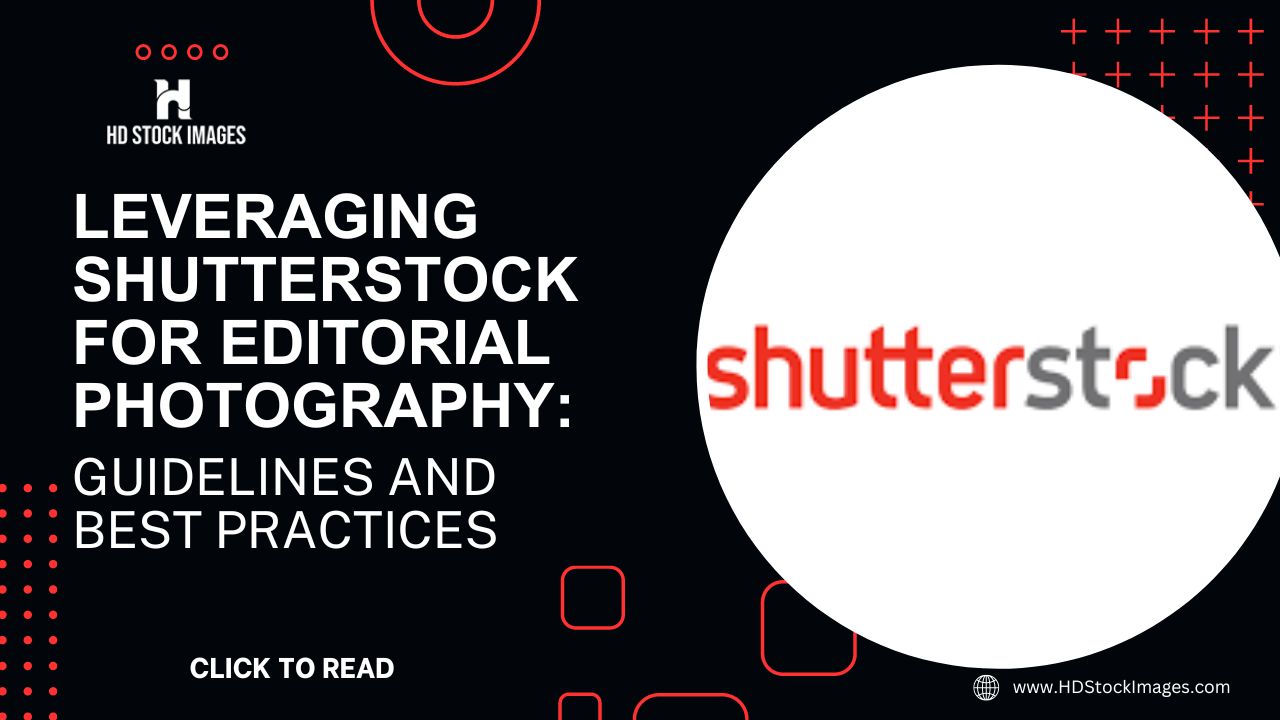1. Introduction
Also Read This: Determining the Number of Photos Required for Consistent Earnings on Alamy
2. Understanding Editorial Photography
 To effectively leverage Shutterstock for editorial photography, it is important to have a solid understanding of what editorial photography entails and how it differs from other types of photography.
To effectively leverage Shutterstock for editorial photography, it is important to have a solid understanding of what editorial photography entails and how it differs from other types of photography.a) Definition and Purpose of Editorial Photography
Editorial photography involves capturing images that tell a story, convey a message, or document current events for editorial purposes. It is commonly used in newspapers, magazines, blogs, and other media platforms to support articles, features, and news stories. The primary goal of editorial photography is to inform, engage, and evoke emotions in the viewer, providing visual context and enhancing the storytelling process.b) Characteristics of Editorial Photography
- Authenticity: Editorial photographs aim to capture real-life situations, genuine emotions, and candid moments, reflecting the authenticity of the subject matter.
- Unobtrusiveness: Editorial photographers often adopt a photojournalistic approach, remaining unobtrusive and capturing events as they unfold without intervening or directing the scene.
- Storytelling: Editorial images should have a narrative quality, helping to convey the essence of the story or event they are associated with.
- Relevance: Editorial photography focuses on subjects that are timely, newsworthy, or of social significance, providing visual documentation of current events, personalities, places, or social issues.
c) Differentiating Editorial Photography from Commercial and Personal Use
| Commercial Photography | Personal Use |
| Commercial photography is used for promotional purposes, such as advertising campaigns or product catalogs, with the intention of generating sales or promoting a brand. Editorial photography, in contrast, is not directly tied to commercial goals and is primarily used for news, storytelling, or educational purposes. | Personal photography is for individual enjoyment or sharing with a limited audience, typically involving family, friends, or personal social media accounts. Editorial photography, on the other hand, has a broader reach and is intended for public consumption through various media channels. |
Also Read This: Exploring Affordable Housing Options in Los Alamos
3. The Benefits of Using Shutterstock for Editorial Photography
Shutterstock's global network of talented photographers and contributors enables access to unique perspectives and coverage of events from around the world. This diversity allows photographers to incorporate different cultural contexts and viewpoints into their editorial projects, enriching the storytelling process.a) Vast Collection of High-Quality Editorial Images
Shutterstock boasts an extensive library of high-quality editorial images, covering a diverse range of subjects, events, and locations. With millions of images available, photographers can find compelling visuals that align with their specific editorial needs, ensuring a wide variety of options to choose from.b) Assurance of Legal Compliance and Rights Clearance
Shutterstock's rigorous image review process ensures that all images available for licensing meet legal and quality standards. This helps photographers and content creators avoid potential copyright and licensing issues. By licensing images from Shutterstock, photographers gain peace of mind knowing that the necessary permissions and clearances have been obtained, reducing legal risks associated with using unauthorized or unlicensed images.c) Fresh and Up-to-Date Content
Shutterstock's vast community of contributors continually adds new and timely editorial images to the platform. This ensures that photographers have access to fresh, up-to-date content, keeping their editorial projects current and relevant.d) Versatile Licensing Options
Shutterstock offers flexible licensing options tailored to editorial use. Whether it's for a single article, a comprehensive editorial campaign, or ongoing content creation, photographers can choose the appropriate licensing option that best suits their specific needs, ensuring compliance with usage rights and restrictions.By harnessing these advantages, professionals can elevate their editorial projects and deliver impactful visual storytelling.Also Read This: Alamy Alternative: Exploring Other Stock Photography Platform
4. Guidelines for Searching and Selecting Editorial Images on Shutterstock
When leveraging Shutterstock for editorial photography, it's essential to follow guidelines and adopt effective practices for searching and selecting the most suitable images. Here are some key guidelines to consider:a) Define Your Search Criteria
Clearly define the subject, theme, or concept you're looking to capture in your editorial project. Consider the specific details, such as location, event, or specific individuals, to narrow down your search.b) Utilize Keywords Effectively
Use relevant keywords to search for images on Shutterstock. Be specific and include descriptive terms related to the subject, event, location, or emotions you want to convey. Experiment with different combinations of keywords to refine your search results.c) Review Metadata and Captions
Pay attention to the metadata and captions accompanying the images. They provide valuable information about the context, location, and individuals depicted. Ensure that the information aligns with your editorial needs and accurately represents the image content.d) Consider Image Resolution and Technical Requirements
Depending on your editorial project's intended use, consider the image resolution and technical requirements. Higher-resolution images are generally preferred for print publications, while web-based projects may require optimized file sizes for faster loading times.e) Evaluate Composition and Visual Impact
Assess the composition and visual impact of the images. Look for compelling visuals that evoke emotions, tell a story, or capture a decisive moment. Consider factors such as framing, lighting, perspective, and the overall aesthetic appeal of the image.f) Consider Editorial Authenticity
Editorial images should reflect authenticity and truthfulness. Avoid images that appear staged, overly edited, or manipulative. Look for candid and genuine moments that accurately represent the subject matter.g) Check Image Restrictions and Usage Limitations
Before finalizing your selection, review the image restrictions and usage limitations specified by the photographer and Shutterstock. Ensure that the intended usage aligns with the licensing terms and any potential restrictions, such as editorial-only use or limitations on sensitive subjects.h) Take Note of Image Variations
Explore different variations of the same subject or event. Multiple images capturing different angles, perspectives, or moments can provide a comprehensive visual narrative for your editorial project.i) Maintain Consistency and Cohesion
Strive for consistency and cohesion in your image selection. Ensure that the chosen images align with the overall tone, message, and visual style of your editorial project. This helps create a cohesive visual storytelling experience for the audience.By adhering to these guidelines, photographers and content creators can effectively search and select the most appropriate editorial images on Shutterstock, ensuring that they align with the desired subject matter, authenticity, technical requirements, and licensing terms.Also Read This: How to Download Photos from Alamy Using YouTube Tutorials
5. Best Practices for Licensing Editorial Images on Shutterstock
When licensing editorial images on Shutterstock, it's important to follow best practices to ensure legal compliance and ethical use. Here are some key best practices to consider:a) Understand the Types of Editorial Licenses
Familiarize yourself with the different types of editorial licenses offered by Shutterstock. These licenses define the permitted usage, duration, and distribution of the images. Ensure that you select the appropriate license that aligns with your specific editorial project's needs.b) Read and Comply with Image Restrictions
Carefully review the image restrictions specified by the photographer and Shutterstock. Image restrictions may include limitations on sensitive subjects, use in commercial contexts, or use in defamatory or misleading content. Respect these restrictions and use the images within the defined boundaries.c) Attribute the Photographer and Source
In accordance with Shutterstock's guidelines, provide proper attribution to the photographer and Shutterstock as the image source. This may involve including the photographer's name or Shutterstock's name in the credits, captions, or accompanying text associated with the image.d) Avoid Copyright Infringement
Ensure that the editorial images you license from Shutterstock do not infringe on any copyright or intellectual property rights. Verify that the images are properly licensed by Shutterstock and that the necessary rights and permissions have been obtained from the original creators or subjects.e) Use Images in Appropriate Editorial Contexts
Utilize licensed editorial images within appropriate editorial contexts. Ensure that the images support and enhance the accompanying text or story, providing relevant visual context. Avoid using the images in unrelated or misleading contexts that distort the intended message or misrepresent the subject matter.f) Maintain Editorial Integrity
Preserve the integrity of the editorial content by avoiding excessive manipulation or alteration of the licensed images. While minor adjustments for color correction or cropping may be necessary, refrain from distorting or misrepresenting the original intent of the image or subject.h) Keep Track of Licenses and Usage
Maintain records of the licenses obtained for each editorial image and track their usage in your projects. This helps ensure compliance with licensing terms and provides a reference for future use or inquiries related to the licensed images.By following these best practices, photographers and content creators can license editorial images from Shutterstock in a responsible and ethical manner. These practices help ensure legal compliance, respect the rights of creators, and maintain the integrity of the editorial content.Also Read This: How Much Does Shutterstock Pay for Photos? Insight into Compensation Rates
6. Maximizing the Potential of Editorial Images from Shutterstock
Shutterstock provides a wealth of editorial images that can greatly enhance your projects. Here are some best practices for maximizing the potential of these images:a) Customize and Adapt Images to Suit Your Project
Editorial images from Shutterstock serve as a foundation for your storytelling. Customize and adapt the images to align with the specific needs of your project. This may involve cropping, adjusting colors, or adding overlays to create a cohesive visual narrative.b) Complement Images with Compelling Captions and Headlines
Pair editorial images with compelling captions and headlines. The combination of powerful visuals and well-crafted text can significantly enhance the impact and storytelling potential of your project. Use captions and headlines to provide context, highlight key points, or evoke emotions.c) Seamlessly Integrate Images into Various Media Platforms
Editorial images from Shutterstock can be seamlessly integrated into different media platforms. Whether it's a print publication, website, blog, or social media post, optimize the images for each platform's specific requirements to ensure optimal visual presentation and engagement.d) Utilize Metadata for Enhanced Discoverability
Leverage the metadata associated with Shutterstock's editorial images. Pay attention to relevant keywords, descriptions, and categories to ensure that your images are discoverable by others searching for similar content. This can increase the visibility and reach of your projects.e) Consider Image Sequences for Storytelling
If your editorial project involves a series of images, consider using sequences of related images from Shutterstock to tell a compelling visual story. Sequencing images can create a sense of progression, build anticipation, or showcase different perspectives on a subject.Remember to customize, integrate, and optimize the images to suit your project's specific needs while leveraging Shutterstock's tools and features to enhance your workflow.Lois is a reporter in the DC universe, you can tell both grounded political stories and more outlandish sci-fi mysteries with the character, how can editorial not see the potential of a Lois book? pic.twitter.com/LNWIqHnYJG
— Superman's pal Matt (@actioncomcs) July 22, 2022

 admin
admin








